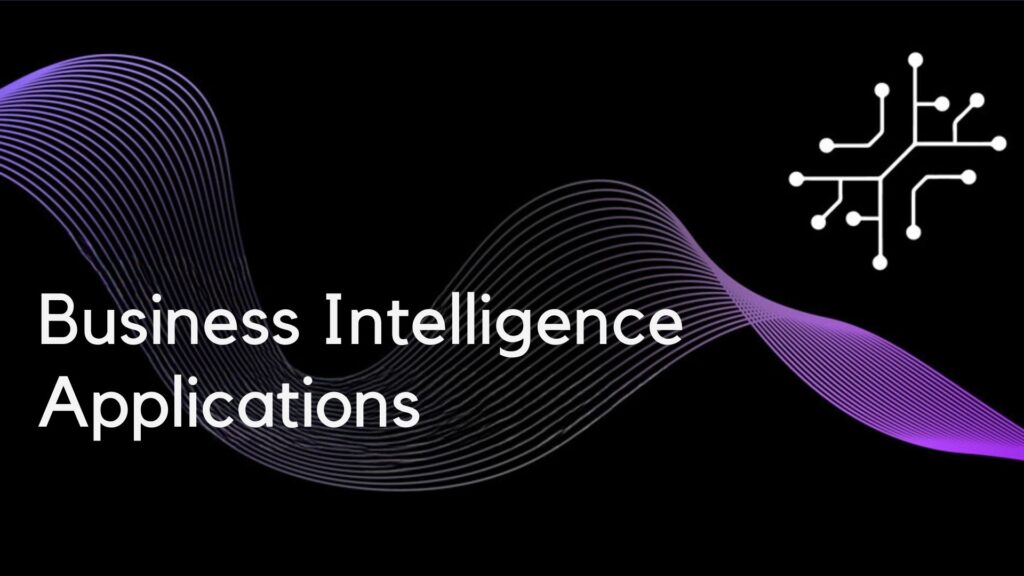Imagine a scenario where you need to make critical decisions but need more data insights. These are the scenarios where businesses fail to seize market opportunities and fail to adapt. Without proper tools, it would be nearly impossible to crunch those data and numbers to extract the insights to support our decisions. Here come the BI apps that help enterprises sail through the sea of data with confidence and clarity.
Wouldn’t it be better if you got the reasoning and rationale behind all your decisions? What if you get insights about why your sales order has declined this month, identify errors in the processes, track the market changes, and seize the opportunities instantly? This is possible with business intelligence applications tailored to your business objectives. Let’s discuss how BI apps are reshaping businesses and solving business challenges in this data-driven economy.
What’s happening in the Business Intelligence Applications Market
BI apps are constantly evolving and matching the latest technological innovations. These apps are updated to match the growing demand for better data analysis. Here are some of the most common trends shaping the future of BI applications in this data-driven market:
Augmented Analytics
A more advanced approach to analyzing the data, which combines Machine Learning, Artificial Intelligence, and Natural Language Processing technologies to improve the analysis process and make accurate insights available faster. Business intelligence plays a critical role in making data insights accessible to even non-technical users. The core purpose of augmented analytics is automating data visualization and data preparation processes with tools such as Power BI and Tableau. These tools enable users to extract insights using NLP without complex SQL queries.
Self-Service BI
No more running after your IT guy to prepare your sales report and graphs; self-service BI helps you build your reports independently. Enterprises are empowering their team members with self-service BI tools and reducing dependency on IT teams.
Data Visualization and Storytelling
Data visualization is not limited to pie charts and graphs; it is more about storytelling. Weaving stories from the data you collected is the core aspect of data visualization with advanced BI tools. Building narratives from the collected data with the help of BI apps highlights the insights and trends.
Real-Time Analytics
We are living in a world where real-time decisions are making the wave. Enterprises that are missing real-time analytics are struggling to understand their customers and offer them personalized services. With the right set of Business Intelligence AI powered apps, enterprises can have real-time insights.
Use Cases:
Enhancing Customer Experience in Retail
Retailers are leveraging BI to decode the preferences of their target customers and optimize their inventory. Giant retailers like Walmart have implemented the BI applications to analyse patterns in sales, customer preferences, buying behaviour and demographics. Enterprises analyse past purchases, demographic data and browsing history of their customers develop a targeted personalized marketing campaigns. Personalized marketing improves customer engagement and increases conversion rates. Amazon leverages BI to provide recommendations to customers based on their preferences.
Optimizing Supply Chain Operations
BI apps are really useful in the places where we generate vast volume of data to streamline the data coming from various sources and make sense out of it. It helps enterprises in demand forecasting practices to schedule their production with current market trends. Moreover, it helps in analysing the vendor performances that help in optimizing the supply chain operations.
Preventing Fraudulent activities and optimizing Financial Services
Industries like finance heavily rely on data for regulatory compliance, fraud detection and risk management activities. Therefore, business intelligence applications are the most important tools for BFSI sector agencies. In most of the cases, financial institutes utilise BI tools to detect fraudulent activities such as JPMorgan Chase leverage BI tool for minimizing the risk associated with frauds by identifying anomalies in the transactions. Moreover, it helps financial experts to categorize customers into various segments to provide personalized experience improving customer experiences. It also assists in credit risk management, checking ability of the customers to repay loans and more.
Optimizing Healthcare Services
BI Apps are revolutionizing the healthcare industry by helping in tracking patient history, identifying patterns and making predictions related to health outcomes of the patients. These data help in creating personalized treatment plans, reducing resources requirement and optimizing the patient care.
Operational Efficiency in Manufacturing with BI Apps
BI applications are used in manufacturing sector to streamline processes, boost efficiency and ensure the quality parameter. Large manufacturing companies such as General Electric and Toyota leverage BI applications to keep a track on their product lines in real-time, having data sets ready to determine any inefficiency in the operations, product failures and take proactive actions. It also helps them to maintain quality standards of the products by analysing product data sets insights.
Advantages of BI Apps
Delivering business value is what makes business intelligence a must-have tool. It helps you go beyond crunching numbers and gives you stories of your data.
Boost your ROI: Did you know that enterprises get an average of $13.01 for every dollar spent on BI applications? Yes, this is what a robust BI solution gives you, i.e., increased ROI.
Enhanced Decision-Making: BI apps help in enhancing the decision-making process. With the right set of BI tools, enterprises extract insights faster and make better decisions.
Operational Efficiency: With BI tools, enterprises reduce their operational cost and boost efficiency. It helps them proactively identify inefficiency and bottlenecks in the processes.
However, implementing business intelligence apps in the organization is not that easy. It comes with a set of challenges. Here are some of the common obstacles enterprises face while implementing BI apps – Data Quality and Integration, User Adoption and Training, and Cost Considerations
Conclusion:
Data paves the foundation of business intelligence. It is the right set of BI tools that turn data into meaningful intelligence, helping enterprises make the right decisions faster and stay ahead of the competition. Let’s connect with experts such as Saxon AI to get business intelligence applications built tailored to your requirements and budget. No more guesswork; you can sail through a sea full of data with confidence with BI apps.






